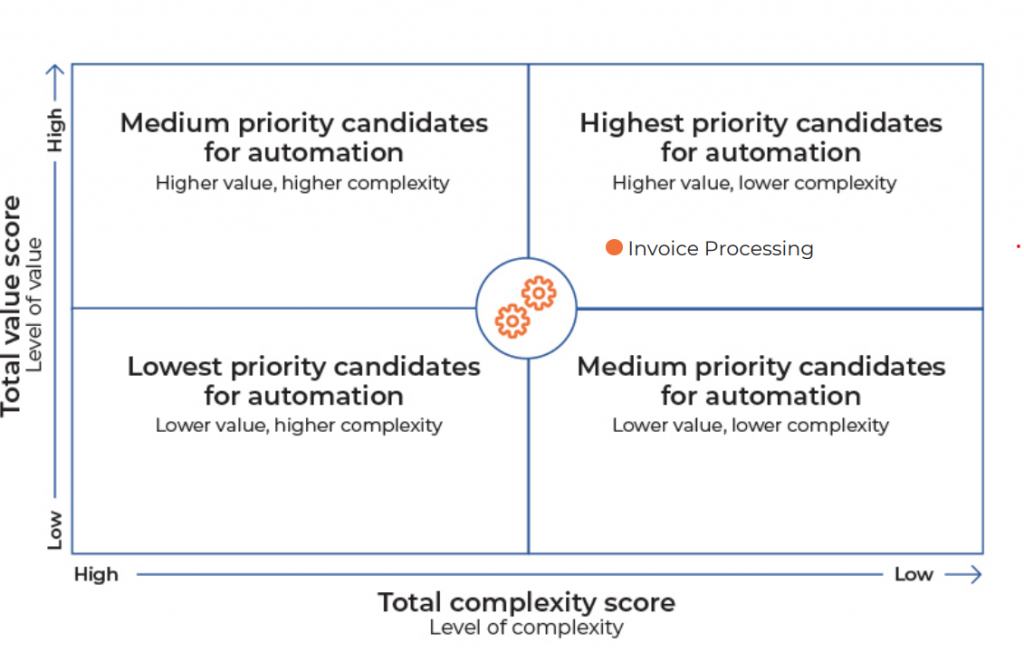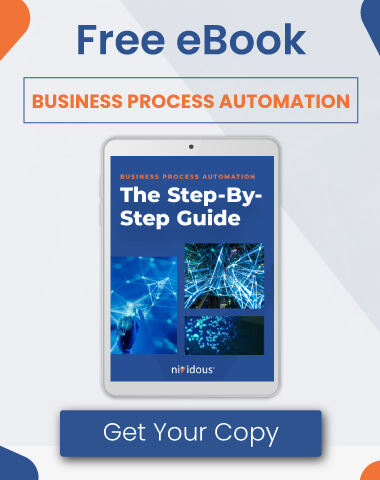Every industry has its own challenges, but the need for more efficient processes is universal. Automation has emerged as the leading means of achieving this efficiency, and it’s easy to see why. Think of efficiency as a ratio between productivity and resource costs. Those resources include staff time, financial investment, materials, or any combination of these factors. Automating a process—using machines to perform and/or manage tasks throughout the workflow—can boost productivity while reducing resource costs. It operates on both sides of the ratio at once.
History has proven the value of automation. Here’s a brief timeline that shows how:
- In the second half of the 19th century, the steam engine automated material handling and manufacturing processes. The McKinsey Global Institute attributes worldwide productivity increases of 0.3% to this development.
- Beginning in the 1990s, widespread use of robotic automation led to 0.4% growth in productivity through 2007.
- Computer automation in the information technology industry added .06% to the world’s productivity between 1995 and 2005.
- The acceleration continues with today’s digital automation tools, leading to a global productivity boost of up to 1.4% by 2065, McKinsey predicts. If the prediction holds true, these productivity gains will surpass those of the steam engine by more than 460%.
The promise of digital automation explains why, as of 2020, 66% of businesses across verticals have taken steps to automate workflows. In fact, every industry can benefit from automating core processes, and it’s easier to begin than you might think. Here’s how to automate your business, regardless of your industry.
Start automating your business processes today with the Nividous Quick Start program.
It is a low-cost, low-risk way to introduce digital automation.
How To Automate Your Business With 4 Key Technologies
Whether your company is in finance, manufacturing, or even life sciences, you get work done through processes. Processes are made up of tasks, which you organize into workflows. A new wave of digital technologies makes it possible to automate these tasks—and that workflow management—to achieve full, end-to-end process automation for anything involving software (which, today, is virtually everything).
Before we describe how to automate your business processes, however, let’s review the technologies that make this comprehensive digital transformation possible. Here are some of the most important:
- Robotic Process Automation (RPA):The robots or (bots) that give RPA its name are software applications that perform repetitive tasks, effectively automating digital actions. These bots operate through user interfaces, so they’re ideal for flexible integration for disparate software, including legacy and cloud-based Software-as-a-Service (SaaS) applications. RPA is particularly good at rules-based behavior and is often used in heavy data-handling tasks like Accounts Payable (AP).
- Artificial Intelligence (AI): With AI capabilities, RPA bots become capable of automating more complex tasks by emulating human cognitive behaviors. Specific AI technologies that enhance digital automation include Natural Language Processing (NLP), machine learning, computer vision, and predictive analytics. These tools allow RPA bots to “understand” human speech and writing; improve performance accuracy over time; extract accurate data from unstructured documents; identify patterns in enormous datasets; and more.
- Business Process Management Systems (BPMS): The true power of digital automation lies in its ability to handle not just process tasks but process management as well. A BPMS platform coordinates all the actors within a process. It guides participants through a workflow map, assigning tasks, recording their completion, and notifying stakeholders throughout the process. Note that these participants may include RPA bots and human workers alike.
- Intelligent Automation: Combine the above three technologies to achieve intelligent automation, also known as hyperautomation. A BPMS platform orchestrates bots and human employees through the process; RPA automates tasks within the process, and AI expands the range of tasks that can be automated. Altogether, it adds up to total process automation from start to finish.
You don’t have to completely change your organization overnight. Intelligent automation may be the goal, but to get there, it often pays to start small.
How To Start Automation Initiatives
Before you can take the first step toward digital transformation, you probably have to convince your colleagues of automation’s value. The best way to do that is to make a clear, data-backed business case for automation. Follow these steps to get started.
1. Evaluate processes for automation potential.
Automation provides value for an extremely wide range of business processes, but to achieve stakeholder buy-in, your first project should show a strong Return on Investment (RoI). To make the best choice, evaluate processes according to two characteristics: value and complexity.
Measure value by considering the process’ average time to completion, staff-hour demands, and human error rates. Measure complexity by figuring out the variability, size, and scope of the process, as well as the number of connected systems involved. Then, pick the process that has the best combination of high value and low complexity. In other words, locate your processes along the Nividous Complexity Vs. Value Matrix (pictured below). Choose one from the top right quadrant.
2. Estimate an RoI for your chosen process.
When you’re starting an automation, business goals should remain central to your plan. Hard numbers can help you determine whether the cost of automation is likely to provide a strong return. Follow these steps to calculate an RoI for an RPA automation project. Better yet, use the free Nividous RoI Calculator for quick, accurate results.
3. Deploy your first RPA bot.
Earlier digital automation projects were long and costly. Companies had to hire developers to create custom-coded software integrations. These projects could take months or even years, with a corresponding price tag. Once they were complete, these automations were frozen in place; new software required new coding.
With RPA, digital automation becomes much more flexible, with a far faster roll-out. A single RPA bot makes a tremendous first automation; once you choose a process to automate, contact Nividous to enroll in the Quick Start Program. We guarantee deployment of a trained, customized RPA bot within just three to four weeks. And if you haven’t yet settled on the right process to automate, don’t worry: Quick Start with Nividous begins by selecting strong RPA candidates in a collaborative workshop.
4. Review the data.
The Nividous platform integrates data collection and reporting, so you can demonstrate the value of your first automation in hard numbers. This detailed reporting also helps you identify future automations—and this project is ongoing. The Nividous team will help you set up a Center of Excellence within your organization, which can help you establish best practices and continue to reap the rewards of increasing automation for sustained, future-proof growth. Once you see the value of automation on a small scale, it’s time to expand on your success.
Progressing From Task Automation To Process Automation
You may start by automating a single task, but you’ll get the most value from end-to-end process automation. The Nividous platform provides everything you need to achieve this goal within a single-pane-of-glass interface. Native RPA, AI, and BPMS capabilities automate complex business processes—and our team of experts helps to optimize those processes before we begin to scale the automation. Intelligent automation through Nividous has led to powerful benefits for companies across verticals. Here are just a few examples.
- An accounting advisory firm automated rate validation from end to end, boosting validation turnaround time by 85%, cutting manual work in half, and completely eliminating human errors in the process. Read the case study.
- A telecom company automated total procure-to-pay processes, reducing paperwork by 90% and shortening the cycle by 35% while providing total visibility in real time. Read the case study.
- A high-tech manufacturer automated a range of back-office operations, including hire-to-retire HR management, purchase order processing, invoice reconciliation, and tracking shipments. This use of Nividous intelligent automation sped up process completion time by 60%, reduced operational cost by 40%, and led to savings of over $90,000 a year. Read the case study.
Interested in achieving similar results?
Sign up for a free, personalized demo to see how the Nividous platform could work for your business—regardless of industry.






